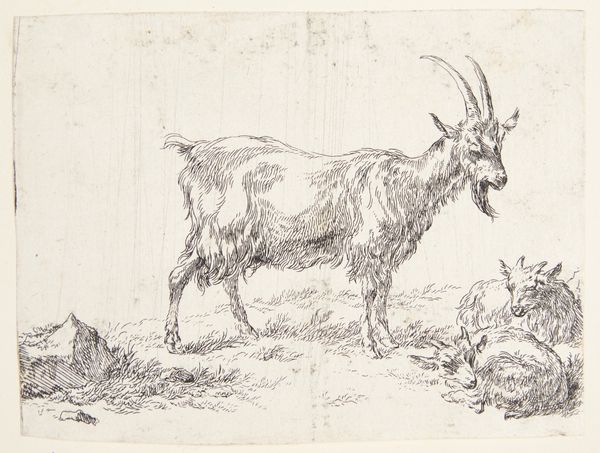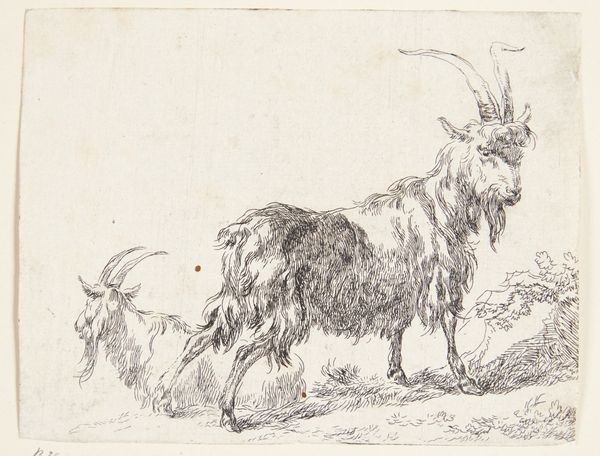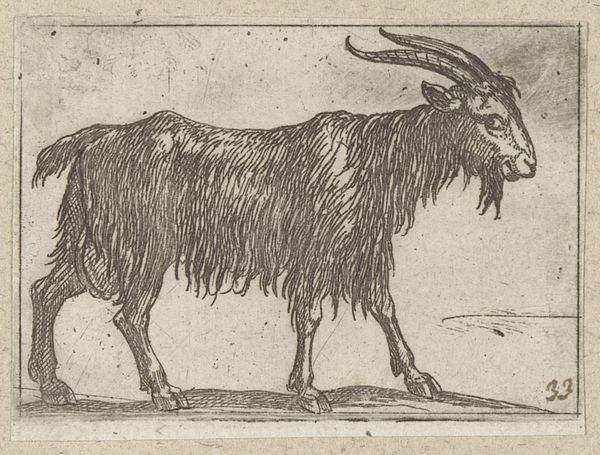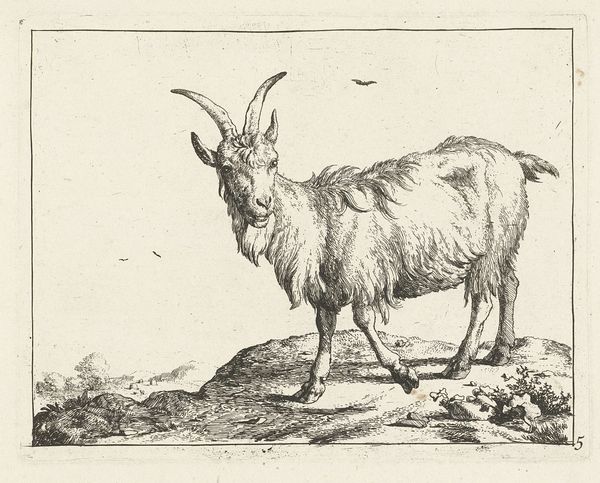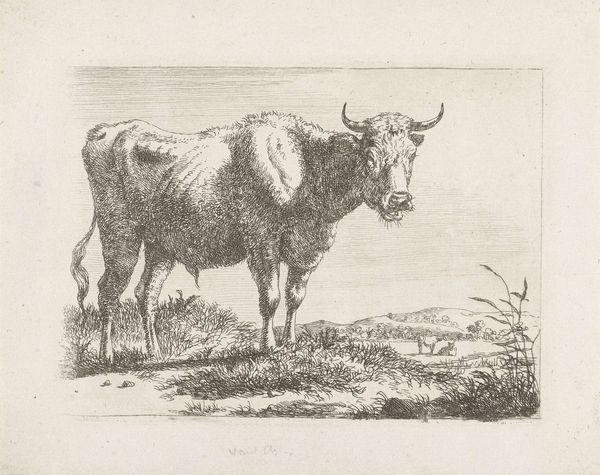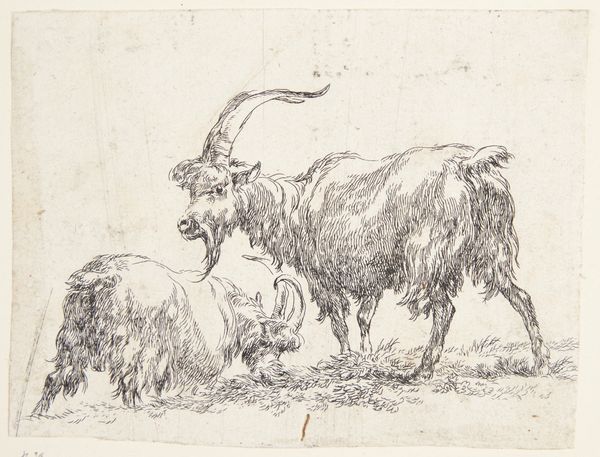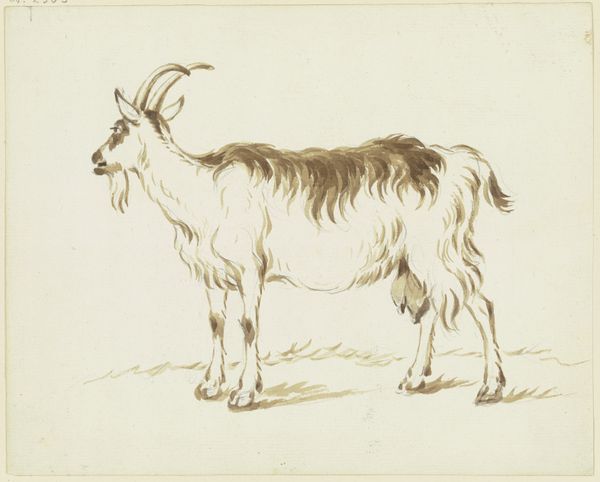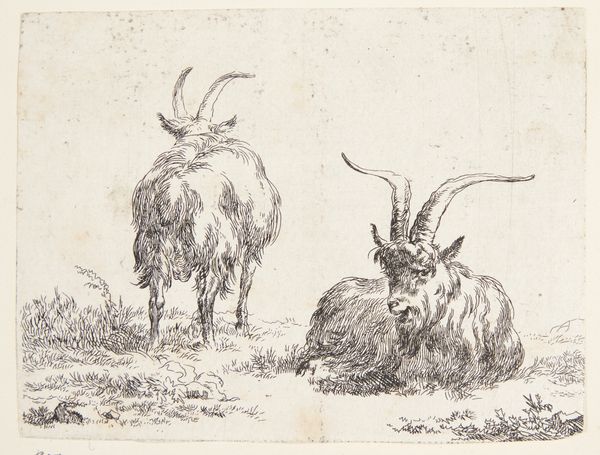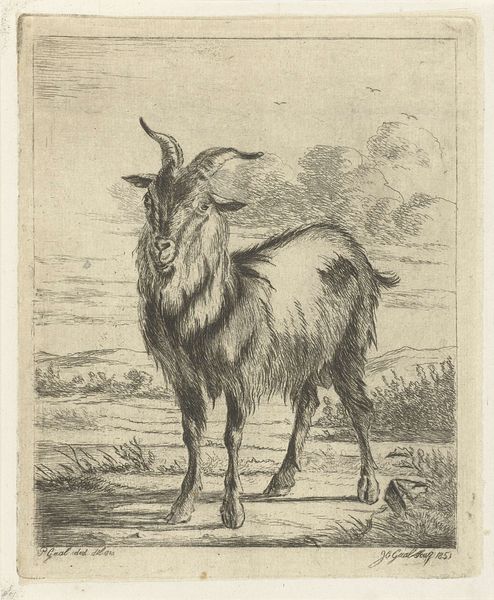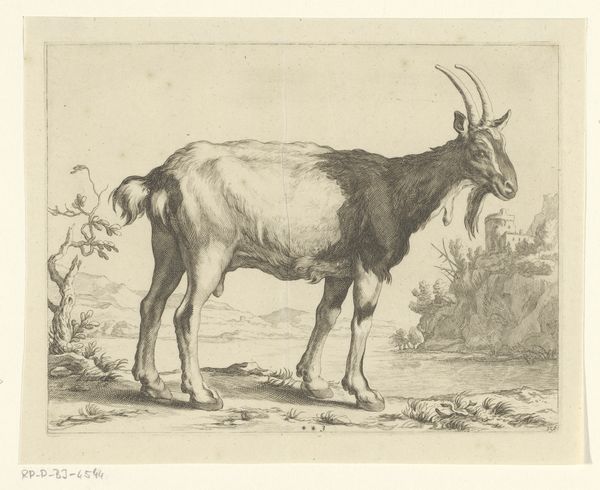
drawing, etching
#
drawing
#
ink drawing
#
animal
#
dutch-golden-age
#
etching
#
landscape
Dimensions: 98 mm (height) x 129 mm (width) (bladmaal)
Curator: Nicolaes Berchem created this etching titled "En stående og en liggende ged," dating it sometime between 1620 and 1683. That’s "A standing and a reclining goat," for our non-Danish speaking visitors. What's your immediate take? Editor: Dry. Utterly dry. Not a hint of moisture anywhere in this scene. The artist renders every hair, every blade of grass, but the whole image feels brittle. Curator: Fascinating! Look at the linework though. Observe how Berchem uses hatching and cross-hatching to build up form, lending volume to the animals. It’s a masterclass in creating tonal variation with a limited palette. Editor: Yes, technically skilled. But why goats? Berchem, working in the Dutch Golden Age, lived in a society grappling with burgeoning trade and Calvinist morality. Goats could represent fertility, rustic life...or even be stand-ins for less savoury aspects of human behaviour. There’s always that symbolic potential. Curator: You're hinting at a didactic element perhaps? For me, it's the textures that dominate. The rough coats of the goats contrasting with the delicate grasses – the interplay of those textures alone holds significant visual interest. Note also the composition. The standing goat is dominant. Why has he done this? Is it power dynamics within animal husbandry? Editor: Or simply compositionally? Framing, arranging objects, creating balance - these elements all are tied to patronage. Are we looking at commissioned art showing prized stock? Did the buyer choose which goat takes centre stage, wanting this artwork as bragging rights? I think so. Curator: It also seems an exercise in pure form. Stripped down of human touch and ego as much as any representation ever can. The lack of sentimentality sets this apart from much animal painting. The light seems a device only, revealing volume. Editor: That’s where we differ, perhaps. I don’t think art ever escapes human desires. Look closely at the light - the highlight over the main goat’s back draws all our attention, its coat glistening within the etching's constraints. To believe otherwise denies art of its critical ability. Curator: I think, ultimately, its value remains a reminder that within the simplest scenes reside vast complexities of meaning. It holds an intimate beauty. Editor: I suppose we both appreciate the ability to spark such contrasting discussion, across centuries no less.
Comments
No comments
Be the first to comment and join the conversation on the ultimate creative platform.
